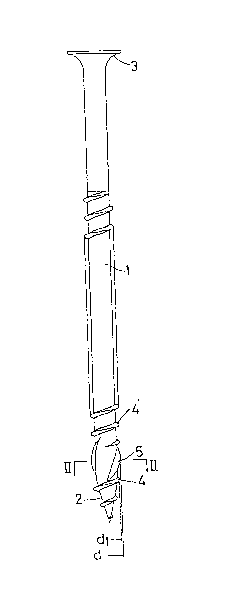Some of the information on this Web page has been provided by external sources. The Government of Canada is not responsible for the accuracy, reliability or currency of the information supplied by external sources. Users wishing to rely upon this information should consult directly with the source of the information. Content provided by external sources is not subject to official languages, privacy and accessibility requirements.
Any discrepancies in the text and image of the Claims and Abstract are due to differing posting times. Text of the Claims and Abstract are posted:
| (12) Patent: | (11) CA 1288980 |
|---|---|
| (21) Application Number: | 1288980 |
| (54) English Title: | TAPPING SCREW |
| (54) French Title: | VIS AUTOTARAUDEUSE |
| Status: | Expired and beyond the Period of Reversal |
| (51) International Patent Classification (IPC): |
|
|---|---|
| (72) Inventors : |
|
| (73) Owners : |
|
| (71) Applicants : |
|
| (74) Agent: | SMART & BIGGAR LP |
| (74) Associate agent: | |
| (45) Issued: | 1991-09-17 |
| (22) Filed Date: | 1987-07-27 |
| Availability of licence: | N/A |
| Dedicated to the Public: | N/A |
| (25) Language of filing: | English |
| Patent Cooperation Treaty (PCT): | No |
|---|
| (30) Application Priority Data: | ||||||
|---|---|---|---|---|---|---|
|
ABSTRACT OF THE DISCLOSURE
A tapping screw having a tapered edge at a rear part of
the tapered portion at its tip. The drill edge has the
maximum diameter which is larger than the maximum thread
diameter at the tapered portion and smaller than the maximum
thread diameter at the shank. The drill edge allows the
screw to be driven in more securely with a smaller driving
force.
Note: Claims are shown in the official language in which they were submitted.
Note: Descriptions are shown in the official language in which they were submitted.

2024-08-01:As part of the Next Generation Patents (NGP) transition, the Canadian Patents Database (CPD) now contains a more detailed Event History, which replicates the Event Log of our new back-office solution.
Please note that "Inactive:" events refers to events no longer in use in our new back-office solution.
For a clearer understanding of the status of the application/patent presented on this page, the site Disclaimer , as well as the definitions for Patent , Event History , Maintenance Fee and Payment History should be consulted.
| Description | Date |
|---|---|
| Inactive: Reversal of expired status | 2012-12-05 |
| Time Limit for Reversal Expired | 2008-09-17 |
| Letter Sent | 2007-09-17 |
| Inactive: Office letter | 2006-12-06 |
| Inactive: Corrective payment - s.78.6 Act | 2006-11-28 |
| Inactive: Office letter | 2006-11-10 |
| Inactive: Corrective payment - s.78.6 Act | 2006-10-18 |
| Inactive: Entity size changed | 2002-06-27 |
| Grant by Issuance | 1991-09-17 |
There is no abandonment history.
| Fee Type | Anniversary Year | Due Date | Paid Date |
|---|---|---|---|
| MF (category 1, 6th anniv.) - standard | 1997-09-17 | 1997-06-04 | |
| MF (category 1, 7th anniv.) - standard | 1998-09-17 | 1998-06-18 | |
| MF (category 1, 8th anniv.) - standard | 1999-09-17 | 1999-06-15 | |
| MF (category 1, 9th anniv.) - standard | 2000-09-18 | 2000-06-05 | |
| MF (category 1, 10th anniv.) - standard | 2001-09-17 | 2001-05-31 | |
| MF (category 1, 11th anniv.) - standard | 2002-09-17 | 2002-06-14 | |
| MF (category 1, 12th anniv.) - standard | 2003-09-17 | 2003-06-03 | |
| MF (category 1, 13th anniv.) - standard | 2004-09-17 | 2004-08-16 | |
| MF (category 1, 14th anniv.) - standard | 2005-09-19 | 2005-08-17 | |
| MF (category 1, 15th anniv.) - standard | 2006-09-18 | 2006-08-16 | |
| 2006-10-18 | |||
| 2006-11-28 |
Note: Records showing the ownership history in alphabetical order.
| Current Owners on Record |
|---|
| YAO SEIBYO CO., LTD. |
| Past Owners on Record |
|---|
| SEIICHIRO TAKASAKI |